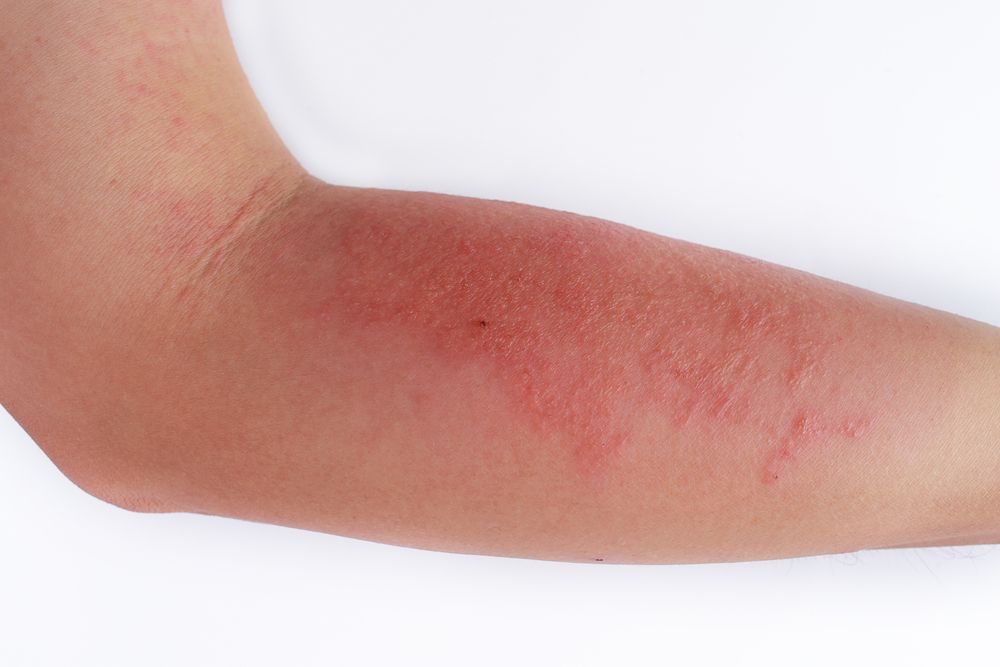- Case-Based Roundtable
- General Dermatology
- Eczema
- Chronic Hand Eczema
- Alopecia
- Aesthetics
- Vitiligo
- COVID-19
- Actinic Keratosis
- Precision Medicine and Biologics
- Rare Disease
- Wound Care
- Rosacea
- Psoriasis
- Psoriatic Arthritis
- Atopic Dermatitis
- Melasma
- NP and PA
- Skin Cancer
- Hidradenitis Suppurativa
- Drug Watch
- Pigmentary Disorders
- Acne
- Pediatric Dermatology
- Practice Management
- Prurigo Nodularis
- Buy-and-Bill
Article
Atopic dermatitis patients receive more complex treatment regimens
Author(s):
Significant variation exists in prescribing patterns among doctors managing atopic dermatitis, and the prescription of some drugs may go against dermatology guidelines, finds a recent study.
To achieve a better understanding of patterns of outpatient prescribing and polypharmacy in U.S. patients with atopic dermatitis, researchers mined data from the 1993–2015 National Ambulatory Medical Care Survey.

Complex treatment regimens, involving multiple drugs are increasingly used for the management of atopic dermatitis, shows a study published in the journal Dermatitis.1
RELATED: Systemic agents fall short for atopic dermatitis patients
The researchers found significant variation exists in prescribing patterns among doctors managing atopic dermatitis and that prescription of some drugs went against dermatology guidelines. For example, fewer than half of patients prescribed oral antibiotics had any evidence of infection.
To achieve a better understanding of patterns of outpatient prescribing and polypharmacy in U.S. patients with atopic dermatitis, the researchers mined data from the 1993–2015 National Ambulatory Medical Care Survey - a cross-sectional national survey implemented by the National Center for Health Statistics via the Centers for Disease Control and Prevention to analyze 128,300 pediatric and 623,935 adult outpatient visits.
They found considerable treatment heterogeneity and polypharmacy in the treatment of both children and adults with atopic dermatitis, which increased over time. Between 1993–2000 and 2011–2015 the proportion of visits to dermatologists yielding four or more prescriptions increased from 10% to 29%, and the proportion of patients receiving multiple prescriptions was higher in visits to primary care practitioners than to dermatologists.
While polypharmacy was highest in older patients aged 50 years or older as expected, it was also common in children and young adults. Adults had fairly low rates of outpatient appointments for their AD, the study found, suggesting those that sought outpatient care tended to have more severe disease requiring more aggressive treatment.
Prescriptions of multiple topical corticosteroids increased with age and peaked at ages 40 to 59 years, as did prescriptions for prednisone.
RELATED: Atopic dermatitis and the atopic march
Polypharmacy is associated with substantially increased healthcare costs, excess healthcare visits, decreased adherence to treatment, greater treatment burden, and more adverse effects and drug interactions.
Some polypharmacy is necessary because of the condition’s variable disease course, distribution of lesions, severity and symptoms, says Jonathan Silverberg, M.D., of the department of dermatology, Preventive Medicine, and Medical Social Sciences at Feinberg School of Medicine, Northwestern University, Chicago. Furthermore, many patients experience sleep disturbances, for which sedating antihistamines are commonly prescribed, and some experience depression, anxiety, and pain which can also require medication.
“Atopic dermatitis patients would likely benefit from simplification of treatment regimen, use of fewer treatments, and deprescribing treatments that are redundant, ineffective or potentially harmful,” adds Dr. Silverberg.
Compared with other clinicians, dermatologists prescribed more topical corticosteroids, more multiple topical corticosteroids, more topical calcineurin inhibitors and corticosteroid combinations, and more systemic immunosuppressants. Topical calcineurin inhibitors were prescribed much less commonly by dermatologists than topical corticosteroids which were the most commonly prescribed treatment.
“This pattern may reflect physician and/or patient concerns about the black box warning assigned to topical calcineurin inhibitors by the US Food and Drug Administration,” Dr. Silverberg says. “Alternatively, dermatologists may not routinely address longterm treatment goals and/or consider steroid sparing agents.”
RELATED: Atopic dermatitis patients’ access to care varies across US
Topical calcineurin inhibitors were rarely prescribed by primary care physicians suggesting that they might, he says, “benefit from improved education about the use of nonsteroidal treatments in atopic dermatitis.”
The study also found that antihistamines and prednisone were commonly prescribed for atopic dermatitis patients, particularly for flare-ups of chronic disease.
Oral antihistamines are ineffective for treating itch and cutaneous inflammation, so only sedating antihistamines are recommended for consideration in atopic dermatitis patients with sleep disturbances or atopic comorbidities.
While some antihistamine prescriptions may have been for sleep disturbances and atopic comorbidities, high rates of antihistamine use were found in patients without a diagnosis of atopic comorbidities. Sleep disturbances were not coded in any atopic dermatitis patients but that it’s unlikely all these prescriptions were for this problem, Dr. Silverberg suggests. Oral antibiotics were prescribed to 7.1% of patients, despite fewer than half having a diagnosis of bacterial infection (42.1%).
“The heterogeneity of atopic dermatitis impacts therapeutic decision making and may lead to complex real-world treatment regimen and polypharmacy, both of which can lead to poor adherence, increased medication costs and adverse events,” he says. “In addition, topical and/or oral antibiotics are often necessary to treat skin infection in atopic dermatitis. However, these may also be used by some clinicians off-label to treat atopic dermatitis, which may be problematic in an era of growing antibiotic resistance.”Â






